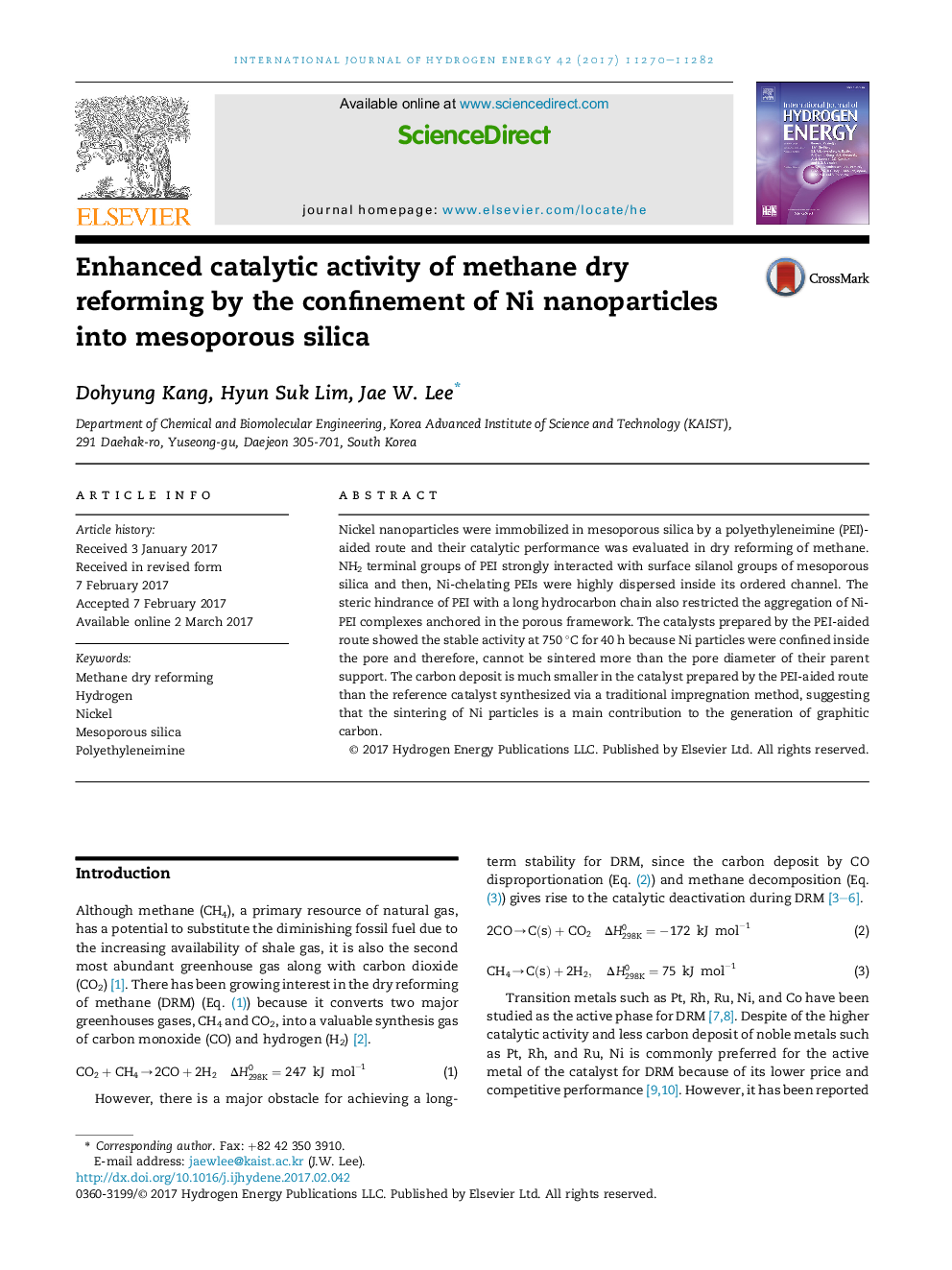| Article ID | Journal | Published Year | Pages | File Type |
|---|---|---|---|---|
| 5145730 | International Journal of Hydrogen Energy | 2017 | 13 Pages |
â¢Ni nanoparticles were confined in a mesoporous silica through PEI grafting.â¢Interaction between PEI NH2 and silica silanol groups caused an even dispersion of Ni.â¢PEI steric hindrance prevented the aggregation of Ni nanoparticles.â¢Pore-expanded mesoporous silica facilitated the incorporation of Ni nanoparticles.â¢Carbon deposits were greatly reduced due to the pore confinement of Ni nanoparticles.
Nickel nanoparticles were immobilized in mesoporous silica by a polyethyleneimine (PEI)-aided route and their catalytic performance was evaluated in dry reforming of methane. NH2 terminal groups of PEI strongly interacted with surface silanol groups of mesoporous silica and then, Ni-chelating PEIs were highly dispersed inside its ordered channel. The steric hindrance of PEI with a long hydrocarbon chain also restricted the aggregation of Ni-PEI complexes anchored in the porous framework. The catalysts prepared by the PEI-aided route showed the stable activity at 750 °C for 40 h because Ni particles were confined inside the pore and therefore, cannot be sintered more than the pore diameter of their parent support. The carbon deposit is much smaller in the catalyst prepared by the PEI-aided route than the reference catalyst synthesized via a traditional impregnation method, suggesting that the sintering of Ni particles is a main contribution to the generation of graphitic carbon.
Graphical abstractDownload high-res image (224KB)Download full-size image
